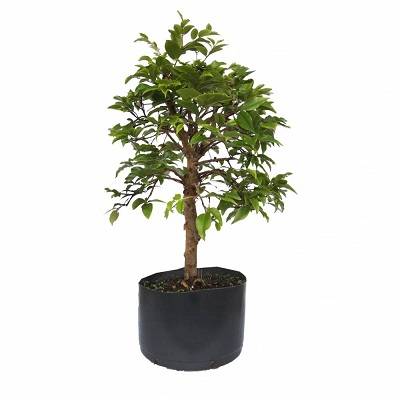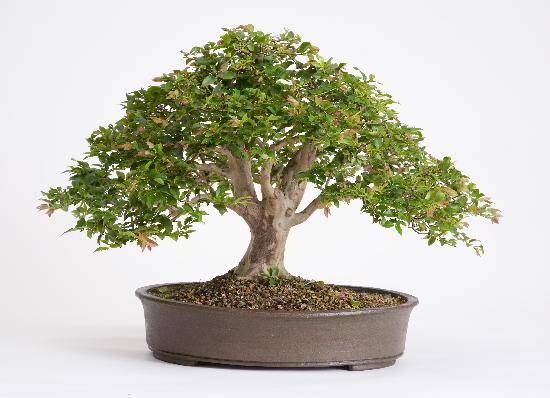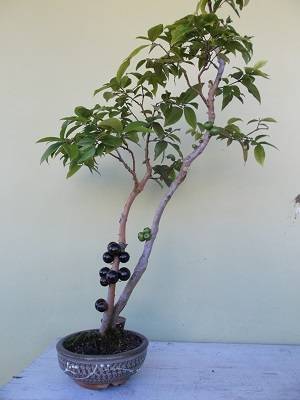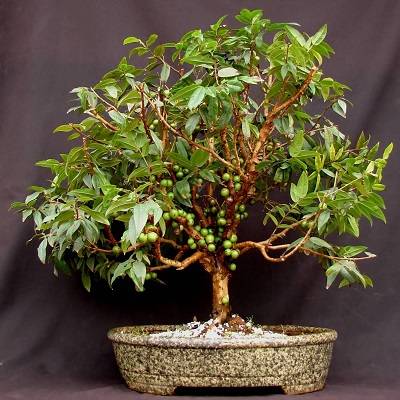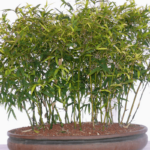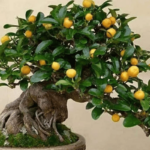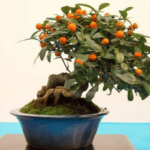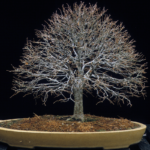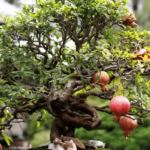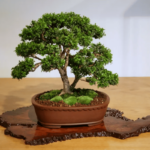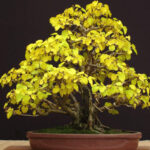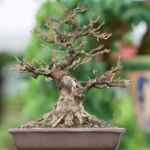The jabuticaba bonsai is one of the most common and most admired by bonsai growers.
This is a plant of easy cultivation and possesses great beauty.
So, if you want to learn how about this type of bonsai, read this article until the end.
Jabuticaba Bonsai Characteristics
Native to Brazil, the jabuticaba tree bears sweet and round fruits that grow on the branches of the trees.
In its natural habitats, a jabuticaba tree can reach up to 15 meters in height, and it can live for more than 100 years.
Some curiosities:
- The first jabuticaba bonsai was created by Jim Wilkins in 1957 in Miami.
- This tree takes between 10 to 15 years to produce its first fruits, so it’s recommended that you start by cultivating a pre-bonsai.
- There’s a myth that jabuticaba bonsais don’t bear fruit, but that’s false.
For your jabuticaba tree to bear fruit, whether in nature or in bonsai form, you need to cultivate it correctly.
This is why you should follow the step-by-step guide below to learn how to take care of your jabuticaba bonsai.
How to Cultivate a Jabuticaba Bonsai
Scientifically known as Myrciaria cauliflora, jabuticaba trees are excellent options for beginner bonsai cultivators.
In addition to being very rewarding to cultivate, they are also quite resilient.
However, like any other plant, they require some special care. Below are some tips that will help you when cultivating your jabuticaba bonsai.
1 – Placement
Jabuticaba trees should be grown outdoors if you live in tropical regions where the winter is not very harsh.
In regions where winter temperatures drop below 10°C (50°F), it’s recommended that during this period, your jabuticaba bonsai is moved to a protected location with plenty of light.
For example, inside your home near a window.
To make the best choice for placing your jabuticaba tree, you should understand the next topic we’ll cover.
2 – Temperature and Lighting
Jabuticaba is a plant native to Brazil, particularly found in the states of Minas Gerais and São Paulo.
In these areas, it’s accustomed to warmer climates and direct sunlight.
To provide optimal lighting for your jabuticaba bonsai, follow these tips:
- Direct sunlight for most of the day, except when the sun is at its hottest.
- Warmer temperatures. Very low temperatures can hinder the plant’s development, so avoid temperatures below 10°C (50°F) as much as possible.
Great options for cultivating this bonsai include placing it in sunny windows (during harsh winters), under trees, or on covered balconies.
3 – Watering
This is one of the most important factors for keeping your jabuticaba tree healthy and free from pests or diseases.
To get watering right, you need to understand that this plant goes through different periods during the year, and each of these periods requires a different amount of water.
Here’s how:
- Summer (prefers slightly moist soil): Water more frequently during this season.
- Spring and fall (growth period): The plant is using a lot of energy to grow and develop, so water consumption is higher.
- Winter: Reduce watering a bit during this period.
To check if the soil of your jabuticaba bonsai has dried out, it’s very simple.
Just insert your finger about 2.5cm (1 inch) into the soil and check if it’s still damp.
Here are other tips that can help you with watering your jabuticaba tree:
- Be very careful not to forget to water your bonsai, as the jabuticaba tree is not resistant to drought.
- If the leaves of your jabuticaba bonsai are turning yellow or falling off, it could be due to lack of watering.
- Factors like pot size, climate, humidity, and temperature influence how much watering your bonsai needs.
4 – Fertilization
There are 2 types of fertilizers you can use for your jabuticaba tree:
- Organic fertilizers
- Inorganic fertilizers
With organic fertilizers, nutrient release is slower, and you don’t risk over-fertilizing your jabuticaba tree.
With inorganic fertilizers, you have more control over which nutrients and in what quantities you provide to your plant.
Both options are great, and the choice of which to use depends on the cultivator’s personal preference.
When to Fertilize and Recommended Fertilizers
Some organic fertilizers that can be used for a jabuticaba bonsai include:
- Bone meal
- Chicken manure
- Castor cake
- Osmocote
A common choice among cultivators is to mix castor cake and bone meal, applying the fertilizer every 2 months.
As for the dosage, check if the product has specific recommendations for bonsai; if not, apply half of what is recommended on the packaging.
Inorganic fertilizers give you greater control over the nutrients provided to your bonsai, but remember to choose quality brands for fertilization.
In this case, fertilization is particularly important during your jabuticaba tree’s growth period, namely spring and summer.
Two excellent fertilizer recommendations are:
- Fertilizers high in phosphorus (e.g., NPK 04-14-08)
- Fertilizers specifically formulated for jabuticaba trees
5 – Pruning
Pruning is essential for any bonsai.
For the jabuticaba tree, I’ve selected a few rules that, if followed, will ensure your pruning is well done.
These are simple yet highly effective rules:
- Cut new branches to shape the tree as desired.
- Avoid pruning during winter.
- Perform larger prunings at the beginning of spring; this will ensure your bonsai recovers quickly.
- Remove shoots that appear near the roots.
6 – Transplanting (Repot)
Repotting a jabuticaba bonsai usually occurs every 1 or 2 years, always in early spring.
To learn how to transplant your bonsai, watch the video below:
Some important notes:
- Jabuticaba trees prefer well-draining soil.
- Wait at least 1 month to fertilize your bonsai after repotting.
- Prune a maximum of 50% of the roots.
7 – Propagation
Jabuticaba bonsai can be propagated in two ways:
- Seeds
- Air layering
Propagation from seeds is a bit more labor-intensive, and it can take between 10 to 15 years to see your first fruits.
Alternatively, if you want to use air layering, choose a branch with fruits and do this at the end of winter.
8 – Wiring
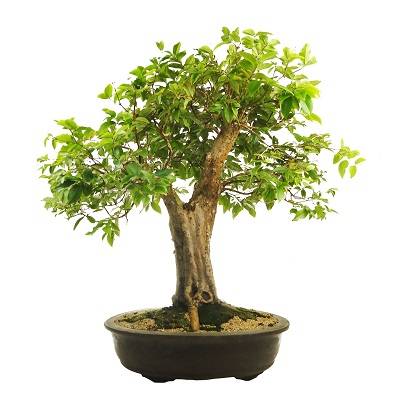
This plant grows very rapidly, so if you’re not careful, you might end up scratching its branches.
However, if you want to wire, leave the wire in place for 2 to 3 months.
Within this time, your plant will likely have achieved its desired shape, and you will likely have avoided scratching its branches.
9 – Pests
Jabuticaba is a very resilient plant, so you’re unlikely to encounter significant issues with pests or diseases.
However, as the saying goes:
Prevention is better than cure
Using organic pesticides can help you avoid these problems.
Some of the main pests that attack jabuticaba trees include:
- Red spider mites
- Scales
- Aphids
Occasionally, monitor your bonsai for problems; this way, you can prevent many pests and diseases.
Conclusion
I hope that with this article, you’ve learned a bit more about one of the most common and cultivated bonsais in Brazil, the jabuticaba bonsai.
If you want to learn more about bonsais, check out the articles below:
- Orange Bonsai – How to Easily Cultivate and Care Without Any Difficulty
- Boxwood Bonsai (Buxus) – Step-by-Step Care Guide
- Lemon Bonsai – Discover How to Cultivate Them Easily
Now it’s your turn! Help us teach more people how to cultivate their plants.
Click on the buttons below and share this article on your social networks, as it greatly helps us.

